Good News Bible, 2nd Ed. 1994
The Good News Bible (GNB), also called the Good News Translation (GNT) in the United States, is an English translation of the Bible by the American Bible Society. It was first published as the New Testament under the name Good News for Modern Man in 1966.
Holy Bible, King James Version, 1970
The King James Version (KJV), also known as the King James Bible (KJB) or simply the Authorized Version (AV), is an English translation of the Christian Bible for the Church of England begun in 1604 and completed in 1611.[a] The books of the King James Version include the 39 books of the Old Testament, an intertestamental section containing 14 books of the Apocrypha (most of which correspond to books in the Vulgate Deuterocanon adhered to by Roman Catholics), and the 27 books of the New Testament.
Holy Bible New Testament, 1984
This New International Version of the New Testament includes a conversational summary called the Bible in Five Acts.
The New American Standard Bible, 1963
The New American Standard Bible (NASB), also known as the New American Standard Version, is an English translation of the Bible. The New Testament was first published in 1963. The complete Bible was published in 1971. The most recent edition of the NASB text was published in 1995. Copyright and trademark to the NASB text are owned by the Lockman Foundation.
Strong’s Exhaustive Concordance of the Bible
Strong, James
The Exhaustive Concordance of the Bible,[n 1] generally known as Strong's Concordance, is a Bible concordance, an index of every word in the King James Version (KJV), constructed under the direction of James Strong. Strong first published his Concordance in 1890, while professor of exegetical theology at Drew Theological Seminary. The purpose of Strong's Concordance is not to provide content or commentary about the Bible, but to provide an index to the Bible. This allows the reader to find words where they appear in the Bible. This index allows a student of the Bible to re-find a phrase or passage previously studied. It also lets the reader directly compare how the same word may be used elsewhere in the Bible. In this way Strong provides an independent check against translations, and offers an opportunity for greater, and more technically accurate understanding of text.
Thompson Chain Reference Bible
Thompson, Frank Charles, Ed.
Dr. Thompson believed the Bible should be presented in a simple, but scholarly way. He saw the need for a well-organized reference Bible that would be of practical use to the layman as well as a minister. In 1890, Dr. Thompson began the work he would continue for the rest of his life. He completed the "thought suggestions" opposite the verses throughout the Bible. These are what became the "chain-links" that are the heart of the Thompson system. Some of the men in Dr. Thompson's church saw his Bible and told him this would be a great help to them in their Bible study too. They encouraged Dr. Thompson to have his Bible, with marginal references, published so that everyone could enjoy the blessing of this helpful study tool.
Unger’s Bible Dictionary
Unger, Merrill, F.
Defines and clarifies unfamiliar names of persons, places and objects in the Bible.
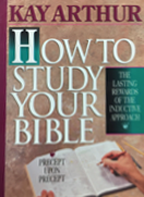 How To Study Your Bible (220 ART)
How To Study Your Bible (220 ART)
Arthur, Kay
How To Study Your Bible is a dynamic guide to cultivating step-by-step Bible study skills such as observation, interpretation, application, and — skills that mean the difference between being a passive spectator and an active participant in God's Word!
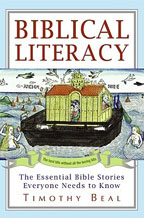 Biblical Literacy: The Essential Bible Stories Everyone Needs to Know (220 BEA)
Biblical Literacy: The Essential Bible Stories Everyone Needs to Know (220 BEA)
Beal, Timothy
Timothy Beal’s Biblical Literacy is a one-stop course in the Bible passages and background information that everyone needs to know to navigate our nuanced cultural landscape—from devout believers to decided atheists, average citizens to pop-culture aficionados.
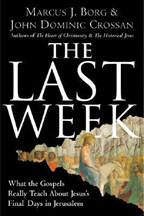 The Last Week: What the Gospels Really Teach About Jesus’s Final Days in Jerusalem (220 BOR)
The Last Week: What the Gospels Really Teach About Jesus’s Final Days in Jerusalem (220 BOR)
Borg, Marcus J. & John Dominic Crossan
Top Jesus scholars Marcus J. Borg and John Dominic Crossan join together to reveal a radical and little-known Jesus. As both authors reacted to and responded to questions about Mel Gibson’s blockbuster The Passion of the Christ, they discovered that many Christians are unclear on the details of events during the week leading up to Jesus’s crucifixion. Using the gospel of Mark as their guide, Borg and Crossan present a day-by-day account of Jesus’s final week of life. They begin their story on Palm Sunday with two triumphal entries into Jerusalem. The first entry, that of Roman governor Pontius Pilate leading Roman soldiers into the city, symbolized military strength. The second heralded a new kind of moral hero who was praised by the people as he rode in on a humble donkey. The Jesus introduced by Borg and Crossan is this new moral hero, a more dangerous Jesus than the one enshrined in the church’s traditional teachings. The Last Week depicts Jesus giving up his life to protest power without justice and to condemn the rich who lack concern for the poor. In this vein at the end of the week Jesus marches up Calvary offering himself as a model for others to do the same when they are confronted by similar issues. Informed, challenged and inspired, we not only meet the historical Jesus but meet a new Jesus who engages us and invites us to follow him.
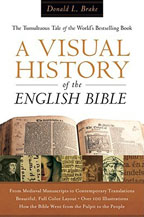 A Visual History of the English Bible (220 BRA)
A Visual History of the English Bible (220 BRA)
Brake, Donald R.
With a full color layout and over one hundred illustrations, A Visual History of the English Bible covers the fascinating journey of the Bible from the pulpit to the people. Renowned biblical scholar Donald L. Brake invites readers to explore the process of transformation from medieval manuscripts to the contemporary translations of our day. Along the way, readers will meet many heroes of the faith — men and women who preserved and published the Scriptures, often at risk of their own lives.
From Wycliffe and Tyndale to King Henry VIII and the Geneva Bible, from the Bishop's Bible and the King James Version to the American Revolution and the Civil War, this tumultuous tale is history come alive. This book is perfect for history buffs, bibliophiles, and anyone interested in the colorful account of the world's most popular book.
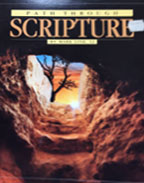 Path Through Scripture: From Genesis to Revelations (220 LIN)
Path Through Scripture: From Genesis to Revelations (220 LIN)
Link, Mark
This book for young people grew out of three challenges:
- Tell the story of the Bible in a single book.
- Include in that book the best activities, discussion topics, and prayer exercises that you have gleaned from twenty years of teaching.
- Write that book in nontechnical language using lots of examples and stories.
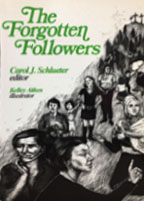 The Forgotten Followers (220 SCH)
The Forgotten Followers (220 SCH)
Schlueter, Carol, J., Ed.
This is a collection of sermons, written by women (from seven denominations) about the women of the New Testament. The sermons retell, reinterpret, and reevaluate the crucial role New Testament women play in bringing faith to birth. The portraits the sermons paint bring these women to life and show them to be models of true discipleship.
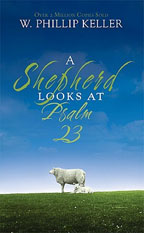 A Shepherd Looks at Psalm 23 (223.2 KEL)
A Shepherd Looks at Psalm 23 (223.2 KEL)
Keller, Phillip W.
"The Lord is my shepherd, I shall not be in want …" Travel the shepherd’s path to the green pastures and cool, refreshing waters of Psalm 23. As a shepherd, Phillip Keller shares his insights into the life and character of sheep ― and of the Good Shepherd who loves and cares for them. This beloved classic will give new meaning to the ageless Shepherd Psalm, enriching your trust in and love for the Lord who watches closely over you.
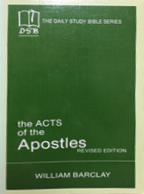 The Acts of the Apostles (225 BAR)
The Acts of the Apostles (225 BAR)
Barclay, William
“What Acts aims to do is to give us a series of typical exploits and adventures of the great heroic figures of the early Church. Although the book never says so, from the earliest times Luke has been held to be its writer. He wrote both his gospel and Acts for the principal purpose of showing how the new faith that began so humbly in Palestine had expanded. Dr. Barclay discusses the plan in Acts, Luke’s skill as a historian, the accuracy of his sources, and the honesty with which he used them.”
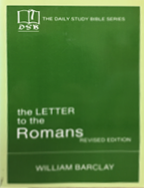 The Letter to the Romans (225 BAR)
The Letter to the Romans (225 BAR)
Barclay, William
Dr. Barclay’s fresh translation and clear exposition make Paul’s very complicated letter to the church in Rome easier than ever to understand. Both in mood and in method Romans is entirely different from Paul’s other writings. Here he is setting down in a systemic fashion the essence of his faith – bequeathing in a “theological last will and testament” the ideas which have most shaped Christian belief: the questions of righteousness, of the Jews as a Chosen People, and of how man is to live his daily life.
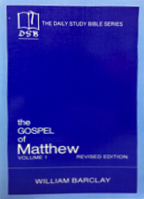 The Gospel of Matthew Vol. 1 (226 BAR)
The Gospel of Matthew Vol. 1 (226 BAR)
Barclay, William
Dr. Barclay gives first the text for each day’s study (in his own translation) and follows this with two or three pages of commentary. He is able to make even the most seemingly unpromising passages fairly burst with meaning.
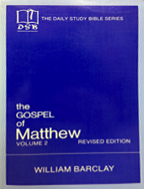 The Gospel of Matthew Vol. 2 (226 BAR)
The Gospel of Matthew Vol. 2 (226 BAR)
Barclay, William
Do you know why the region of Caesarea Philippi was an especially appropriate place for Jesus to ask the tremendous question: “And you – who do you say that I am?” Are you satisfied about the meaning of “You are Peter, and on this rock . . .?” Dr. Barclay clarifies these and many other interesting and perplexing matters in this second volume of The Gospel of Matthew.
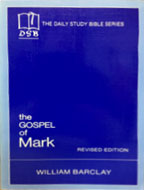 The Gospel of Mark (226 BAR)
The Gospel of Mark (226 BAR)
Barclay, William
When we study the Gospel According to Saint Mark, we study the most important book in the New Testament, for in it we have the first life of Jesus ever to be written, the one on which all other accounts are based. Touching on Mark’s own life, he discusses the rift that Mark occasioned between Paul and Barnabas, Mark’s sources of information about Jesus, the characteristics of his Gospel writing and the mystery of the “lost ending”.
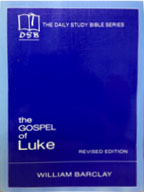 The Gospel of Luke (226 BAR)
The Gospel of Luke (226 BAR)
Barclay, William
“Somehow of all he Gospel writers,” comments Dr. Barclay, “one would have liked to meet Luke best of all.” Luke is reported here fully and clearly for everyone to understand.
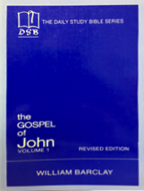 The Gospel of John Vol. 1 (226 BAR)
The Gospel of John Vol. 1 (226 BAR)
Barclay, William
“The Gospel According to Saint John is to many people the most precious book in the Bible,” says Dr. Barclay in this first of two volumes. He has accompanied his unique translation of the text with detailed commentary almost verse by verse. A comprehensive introduction presents additional material.
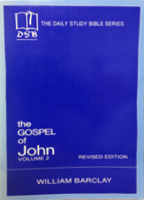 The Gospel of John Vol. 2 (226 BAR)
The Gospel of John Vol. 2 (226 BAR)
Barclay, William
The Gospel of John, says Dr. Barclay. “is an amazing book. It can be read and loved without any commentary at all. But the more we study John, the more wealth arises out of it . . . There is many a phrase in John whose greatness will not be exhausted in a lifetime, let alone in a single day.”
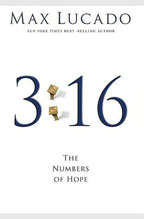 3:16 The Numbers of Hope (226.5 LUC)
3:16 The Numbers of Hope (226.5 LUC)
Lucado, Max
Lucado digs deeply into one of the most famous and oft-quoted passages of the Bible—John 3:16. First situating it in its biblical context as part of Jesus’ conversation with Nicodemus, Lucado then dissects the 26-word promise phrase by phrase, picking out key theological ideas that provide hope to Christians. What does it mean that God “so loved the world”? What must we do to gain everlasting life? Using his trademark folksy style, Lucado employs great stories and real-life illustrations to drive home points about God’s love, justice and determination to save. It is followed by a 40-day Bible study on the life of Jesus (excerpted from Lucado’s prior books).
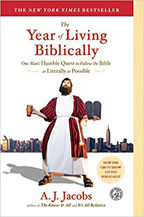 The Year of Living Biblically: One Man's Humble Quest to Follow the Bible as Literally as Possible (220 JAC)
The Year of Living Biblically: One Man's Humble Quest to Follow the Bible as Literally as Possible (220 JAC)
Jacobs, A. J.
A.J. Jacobs chronicles his hilarious and thoughtful year spent obeying―as literally as possible―the tenets of the Bible.
Raised in a secular family but increasingly interested in the relevance of faith in our modern world, A.J. Jacobs decides to dive in headfirst and attempt to obey the Bible as literally as possible for one full year. He vows to follow the Ten Commandments. To be fruitful and multiply. To love his neighbor. But also to obey the hundreds of less publicized rules: to avoid wearing clothes made of mixed fibers; to play a ten-string harp; to stone adulterers.
The resulting spiritual journey is at once funny and profound, reverent and irreverent, personal and universal and will make you see history’s most influential book with new eyes.